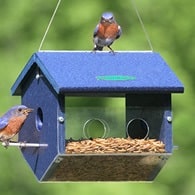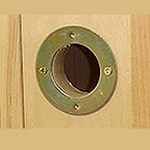Bluebird Fledglings: What Happens After They Leave the Nest?
If you've ever had the joy of watching a bluebird family raise their young, you know how exciting it is when the fledglings finally take their first flights.
But what happens after that? Do they stay close to home? Are they still cared for by their parents? How do they learn to survive on their own?
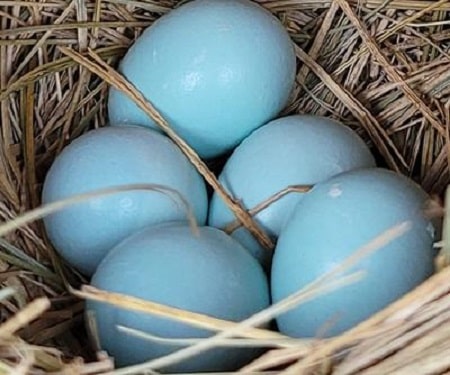
Let's take a closer look at the fascinating journey of a bluebird fledgling as it steps out into the world.
What Does a Bluebird Fledgling Look Like?
Bluebird fledglings dont start out with the unmistakable blue plumage of their parents right away. Instead, their feathers are a mix of grayish-brown and soft blue, often speckled with faint spots on their chest as is common amoung the Thrush species.
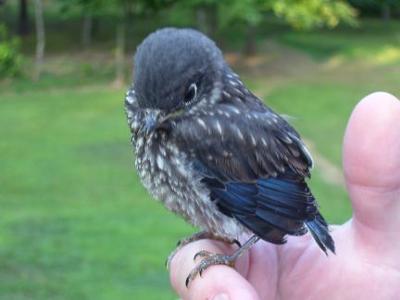
Their wings and tail feathers are usually tinged with blue, a hint of the brilliant adult coloration they will develop in the coming months.
Their beaks are slightly shorter than an adult's, and their movements can appear clumsy at first. Unlike nestlings, which have a constant, wide-open begging posture, fledglings become more cautious as they explore their environment.
They still rely on their parents for food, but their growing curiosity pushes them to try new things.
Taking the Leap Out of the Nest
Leaving the nest is a big moment for a young bluebird. Typically, it happens when they are around 16 to 21 days old. The parents encourage them by reducing feedings, calling to them from outside the nest, and even demonstrating short flights nearby.
The majority of young bludbirds leave in the early to mid-morning hours. However, some take more time and may leave later in the day. By dusk they are either gone or will wait until the next day.
Their flights are can be short to the nearest shrub or longer to a tree a 100 feet away. While landings may lack the grace of the adults, in a couple of days they'll be as proficient as their parents.
Learning to Survive
Even after they leave the nest, young bluebirds have a lot to learn. Their parents continue feeding them for another two to three weeks, bringing them a diet of soft insects like caterpillars, mealworms, and beetles.
As they grow stronger, the fledglings begin pecking at the ground, picking up small insects on their own. Eventually, they add berries and other natural foods to their diet.
During this time, they also master other survival skills. They learn to recognize alarm calls from adult birds, take shelter when danger approaches, and identify safe foraging areas.
Do Bluebird Fledglings Stay in the Area?
Once bluebird fledglings are independent, their movements depend on the time of year and available food sources. Some remain close to their birthplace, especially if the area provides ample insects, berries, and safe nesting sites.
Others wander farther, joining loose flocks of young bluebirds searching for good feeding grounds.
In regions where bluebirds stay year-round, some fledglings may stick around through the fall and winter, roosting in tree cavities or nest boxes alongside other juveniles.
If the weather is mild and food remains abundant, they might stay within just a few miles of where they hatched. You can help by providing mealworms
Do They Help with Future Broods?
By late summer, bluebird parents often raise a second or even third brood. Some fledglings, particularly older ones from the first brood of the season, may stay nearby and assist in feeding their younger siblings.
While not all fledglings take on this role, some are seen bringing food to the nestlings or keeping watch as the parents forage. This behavior isn't as common as in some other bird species, but it does happen, particularly in areas where resources are plentiful.
Do Bluebird Fledglings Use Birdbaths?
Like their parents, bluebird fledglings will use a birdbath. Fresh, clean water is essential for keeping their feathers in top condition, which is especially important as they're learning to fly.
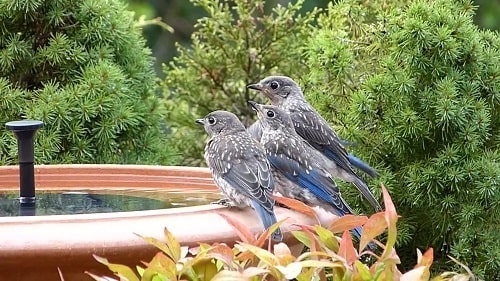
Recent Fledglings Visiting Birdbath
At first, they may approach the water hesitantly, watching adults or other birds before stepping in. But once they figure it out, they eagerly wade in, fluff their feathers, and shake off the droplets.
Offering a shallow birdbath with a gentle slope can encourage fledglings to bathe safely. Adding a small rock or perch in the water can also help them feel secure.
How Long Do Parents Care for Their Young After They Leave?
Adult bluebirds continue feeding their fledglings for about two to three weeks after they leave the nest.
As fledglings become more confident, they begin to hunt for food on their own, pecking at the ground for beetles, worms, and other small invertebrates.
By the time they are about a month old, they are largely independent, though they may still beg for food from their parents occasionally.
In late summer, their diet shifts to include more berries and fruits. This natural transition helps prepare them for the colder months when insects become scarce.
A Glimpse into the Life of a Young Bluebird
Watching bluebird fledglings grow, explore, and gain independence is a rewarding experience for any bird lover. These young birds go from fragile, dependent nestlings to confident flyers in just a few short weeks.
Even after they leave the nest, they remain connected to their families, learning from their parents and sometimes even helping younger siblings.
If you're lucky enough to have bluebirds nesting in your yard, providing a safe, welcoming space with native plants, clean water, and natural food sources can help these beautiful birds thrive.
And who knows? Some of this year's fledglings may return next season to raise families of their own.

